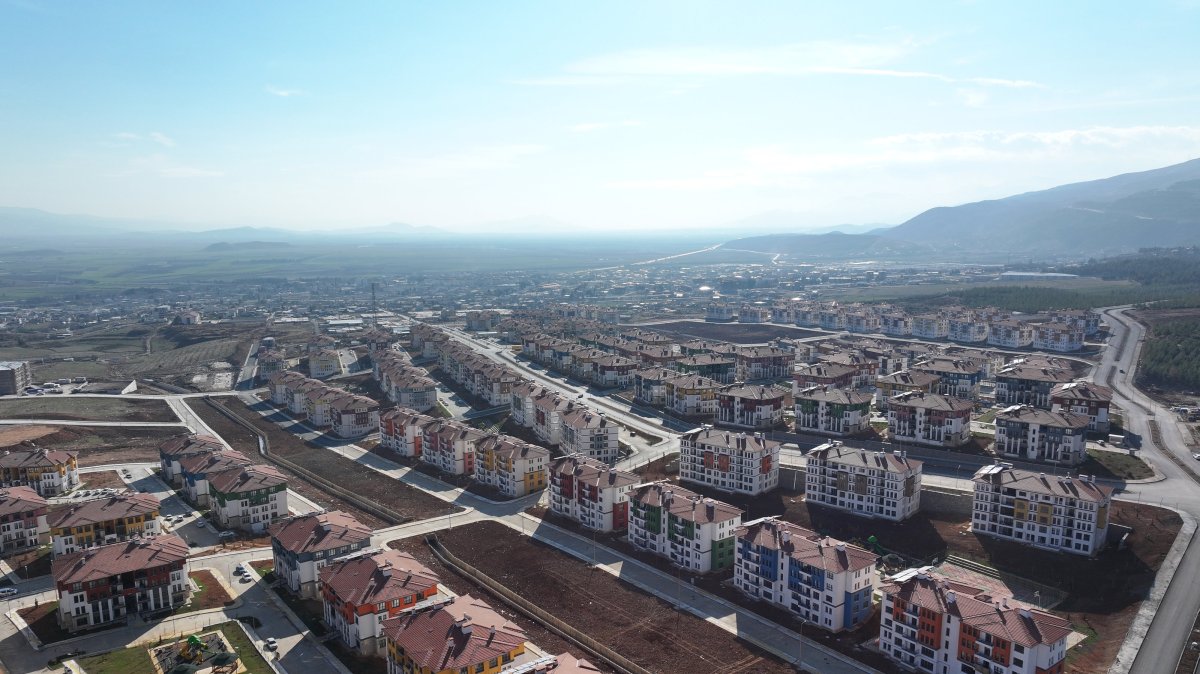- Pray that many muslims' hearts would be shaken by God during all these earthly shaking.
- Pray that people's lives and properties would be kept safely during all these earthquakes.
- Pray that God would continue to shake the heavens and earth in these last days for people to come back to Him (Haggai 2:1-9).
 Workers reconstruct homes and businesses at 3,481 sites across 11 quake-hit provinces, as Türkiye aims to deliver over 450,000 new units by year’s end, Gaziantep, Türkiye, June 21. 2025. (AA Photo)
Workers reconstruct homes and businesses at 3,481 sites across 11 quake-hit provinces, as Türkiye aims to deliver over 450,000 new units by year’s end, Gaziantep, Türkiye, June 21. 2025. (AA Photo)Disaster management expert Bülent Özmen, a faculty member at Gazi University’s Faculty of Engineering, Department of Civil Engineering, stated that over 18,100 earthquakes occurred in Türkiye during the first half of 2025, which translates to an average of four earthquakes per hour and 100 per day.
Özmen emphasized that Türkiye, including its maritime zones, contains nearly 1,000 active fault lines capable of generating earthquakes, and that the country typically records an annual average of 25,000 earthquakes.
He noted that the number of earthquakes recorded from Jan. 1 to June 30 has already approached this annual average, adding, “In the first six months of the year, 18,191 earthquakes occurred. This figure is above the average.”
Özmen pointed out that one of the key reasons behind this increase was the series of earthquakes that occurred near the Greek islands of Santorini and Amorgos during January and February. He also underlined that the 6.2 magnitude earthquake that struck Istanbul on April 23 significantly increased seismic activity.
He reported that Muğla, in southwestern Türkiye, recorded the highest number of earthquakes, followed by Malatya in eastern Türkiye, Kütahya in western Türkiye, Kahramanmaraş in southeastern Türkiye and Istanbul, and added: “We can now detect even earthquakes smaller than magnitude 2. According to the data, the highest seismic activity occurred in February and April. This means there were approximately 4 earthquakes per hour, or 100 per day."
"Specifically, 206 quakes were between magnitude 4.0 and 4.9, 18 were between 5.0 and 5.9, and three were larger than magnitude 6. The most significant of these were the earthquakes in Istanbul, Kulu (Konya), and off the coast of Bozburun in Marmaris. These earthquakes caused two fatalities and injured 452 people,” he added.
Özmen also referred to recent tremors in the Marmara region: “On July 1 and 2, three earthquakes of magnitude 3.9, 4.2, and 4.3 struck Gemlik. On July 5, another 3.8 magnitude quake occurred off the coast of Silivri on the Kumburgaz segment of the fault line.”
He said these recent events once again draw attention to the earthquake risk facing the Marmara region and Istanbul, continuing, “Generally, focus is placed on the northern strand of the North Anatolian Fault that runs just 15-20 kilometers (9 to 12 miles) off the coast of Istanbul.
However, recent activity near Gemlik, in the southern part of the Marmara Sea, shows that earthquakes are also occurring along the southern strand of the North Anatolian Fault. This indicates that Istanbul could also be seriously affected by potential seismic activity from this segment, which has been identified as a seismic gap.”
Özmen added that while earthquakes typically occur along tectonic plate boundaries like the North Anatolian and East Anatolian Faults, there are also intra-plate active faults in areas such as Konya and Ankara. He cited earthquakes that occurred in Kulu on May 15 and in Ankara on Feb. 17 and June 29 as examples, warning that, “Contrary to common belief, the central Anatolia region is also under earthquake threat.”
He stressed the need to accelerate earthquake risk mitigation efforts, especially in Istanbul, the Marmara region and other parts of Türkiye, and warned that, “An earthquake with a magnitude above 7 in the Marmara Sea could have two to three times greater impact than the earthquakes centered in Kahramanmaraş.”
Resource https://www.dailysabah.com/turkiye/turkiye-records-over-18000-earthquakes-in-first-half-of-2025/news
